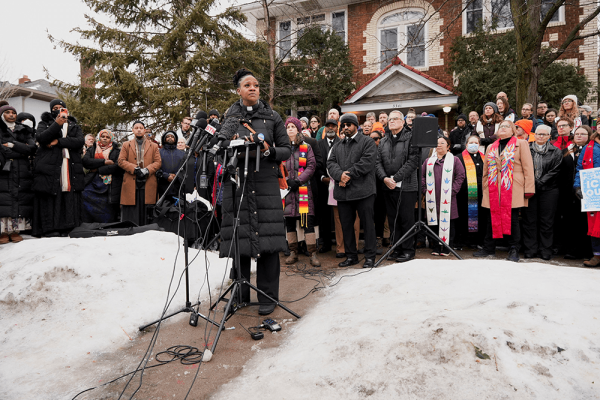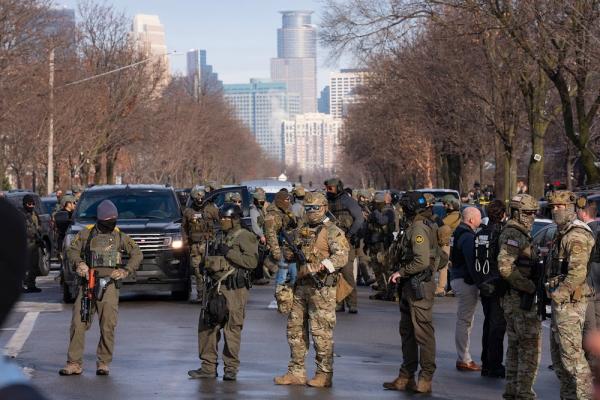From April to November 1919, mobs of angry whites attacked African Americans in an unprecedented wave of violence that rolled across the country. Large-scale attacks were recorded in nearly 40 cities, including Chicago and Washington, D.C., and in smaller rural towns like Elaine, Ark. Once the spark of violence erupted, white mobs often indiscriminately attacked and killed black men, women, and even children and set fire to black businesses, churches, and homes. Although there are no precise records, conservatively, hundreds of African Americans were killed, thousands were injured, and tens of thousands more were displaced.
The strain of World War I, the jolt of returning black soldiers expecting more from their country after risking their lives abroad, an economic recession, and hysteria about a rising Communist threat infiltrating the U.S. were certainly major factors that made America vulnerable to an outbreak of violence. But another event that decimated America’s social fabric just ahead of what James Weldon Johnson, field secretary of the NAACP, dubbed “the Red Summer” was the 1919 influenza epidemic. Beginning in March 1918, three waves of a deadly form of influenza swept through the U.S., killing an astonishing 675,000 Americans. That infection curve was just declining in the winter of 1919 as the white supremacist violence curve began to rise.
It’s easy to think a wave of post-virus racial violence like this couldn’t occur today. We’re not coming out of a major world war. And the modern civil rights movement, which traces its roots to actions of resistance during Red Summer, has secured more equal rights and protections for racial minorities. But we are facing official unemployment levels of nearly 20 percent, levels not seen since the Great Depression. Our civic ties have been fraying over the last few decades. And President Trump’s victory in the 2016 campaign laid bare the reality that our greatest divisions are marked not by policy disagreements but by the deeper fault lines of partisan, racial, and religious identity. Even before the pandemic, white supremacy and racial resentment resurfaced as visible features of our culture, religions, and politics.
Americans are wholly unprepared — not just in public health or economic terms, but in terms of our culture and values — for what we will be facing in the next few weeks. Even if the more recently reduced projections hold, the coronavirus will claim the lives of more than 60,000 Americans. To put this in perspective, even these lower estimates would exceed the American lives lost in the Vietnam War. And if the death toll turns out to be more than 100,000 (where estimates had it just two weeks ago), it would roughly equal the lives lost in World War I.
Most of the news has appropriately focused on protecting the physical health of the American public and shoring up the tanking American economy. But if history has a lesson for us here, it is this: Where there is a massive wave of suffering and death, a second wave of racism and xenophobia is typically not far behind. Experiences of mass grief and economic stress easily generate a desire for someone to blame. This is especially true of events that defy logic, such as the randomness of illness. Why is one person infected and not another? Why did this person die while another experienced only mild symptoms? Why have I lost my job while others have not? And most importantly, how can we restore a sense of order and safety in the wake of such devastating losses?
We have seen this scapegoating reflex play out before. An 1832 cholera epidemic in New York was blamed on Irish Catholic immigrants who were changing the culture of the white Protestant-dominated city. An outbreak of smallpox in San Francisco in 1876 was blamed on the Chinese population, sentiment that fueled the passage of the Chinese Exclusion Act in 1882. Nazi Germany propaganda associated Jews living in poorer sections of German cities with being disease vectors for the broader population and metaphorically talked of Jews as being themselves a disease that had infected Europe.
Unfortunately, the Trump administration has continued to prime the public with xenophobic thoughts that could easily become contagious. In his Oval Office address on March 11, Trump took pains to note that the virus originated in China and referred to it as “a foreign virus.” A week later, a Trump administration official called the virus the “Kung-Flu” in the presence of CBS News reporter Weijia Jiang. And on March 19, a photo by Washington Post staff photographer Jabin Botsford, showed Trump had crossed out the word “Corona” in his printed notes and replaced it with the word “Chinese” written in bold black Sharpie. On March 25, Secretary of State Mike Pompeo’s insistence on using the term “Wuhan virus” prevented the G-7 nations from issuing a joint statement about the pandemic. In early April, there was news that the Trump administration is accelerating work on a section of the border wall between Arizona and Mexico, with Trump declaring, “We will do everything in our power to keep the infection and those carrying the infection from entering our country.” And this week, Trump declared he was temporarily suspending immigration to the U.S. — barring the provision of new green cards and work visas.
In the midst of the stress and grief we are facing as a nation, the human drive to create meaning out of the meaningless is powerful. Already, xenophobic ideas are being spread from the highest office in the land. There is evidence of a surge of anti-Asian racism on white supremacist websites, and there are steady reports of Asian Americans being targeted. The time for our political, religious, and business leaders to help us flatten this curve is now. If we wait until the xenophobia goes viral, it will be too late.
Got something to say about what you're reading? We value your feedback!






